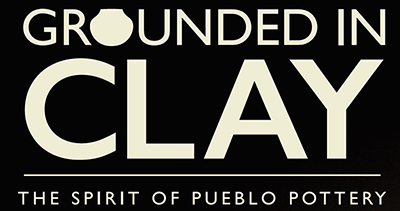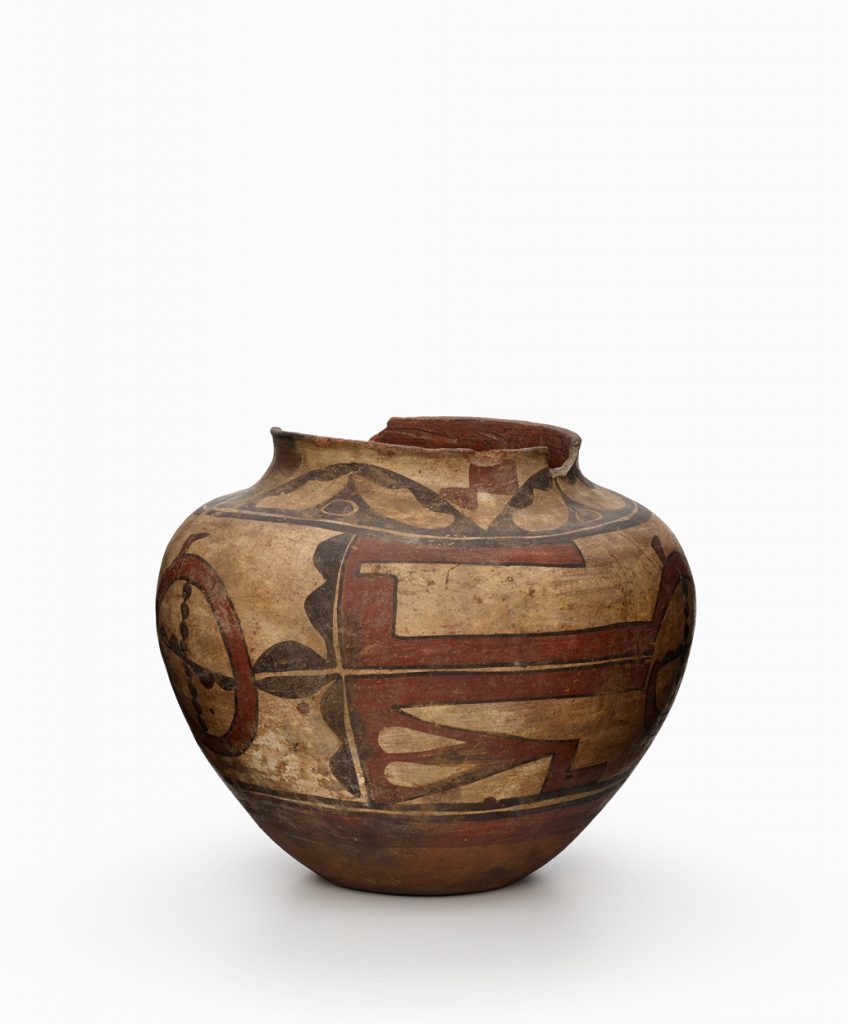Donna Pino
Tamaya/Santa Ana
Curator Donna Pino (Tamaya/Santa Ana) is a potter, seamstress of traditional shirts and dresses, embroiderer of kilts, and a teacher of all.
Donna chose the following for the Grounded in Clay exhibit:
The Rhythms of Clay Echo Stories of Centuries Past
Clay Woman calls from the bosom of the earth. She calls to the North, to the West, to the South, and to the East. Some hear her call in the stillness of a bright, sunny day; some hear her call near rushing rivers and the still waters of lakes; and some hear her call on high, cool mountaintops. Clay Woman calls from the bosom of the earth: “Come, come use my clay to form vessels for storing, for drinking, for eating, and for ceremony.”
As Dawn reached the horizon of Red Clay Hill, those who heard Clay Woman entered. Those Who Entered marked the beginnings of forming, shaping, and painting vessels of all kinds. Those Who Entered painted symbols of mountains, clouds, rain, fields, seeds, blossoms, birds, and animals on the vessels. With these symbols, stories were formed and depicted by Those Who Entered. Before the vessels were formed, shaped, and painted, Those Who Entered prayed for help and guidance, so that worries evaporated and the ingredients of Mother Earth nurtured the body, mind, and spirit.
I am one of many who entered the realm of Clay Woman. I will interpret for you—using my personal thoughts and feelings, combined with stories of old—the story that these vessels before you portray.
Since the time of emergence, my ancestors worked diligently to survive in the land of mountains, hills, meadows, plains, lakes, and rivers. As hunters, they followed the tracks of deer and other animals to hunt for food and clothing. The deer, our distant kin, were hunted by hunters who had a good heart. They sang and prayed to attract the deer to them. As the deer is brought down, the hunter gives thanks for its dying, so that in its death the deer gives the People food, clothing, health, and life. In this way, the deer’s cycle of life is completed, but the deer itself is transformed and renewed, to live again.
Deer tracks are depicted on the pottery vessels as a way to honor, to give thanks, and to serve as a remembrance that the deer and other animals are bonded to the People for the perpetuation of life.
As gatherers, my ancestors gathered seeds, roots, leaves, blossoms, and the fruits and berries of shrubs and cacti, to sustain themselves. The plants were grown and nurtured in the deep, dark, rich soil. Over time, the People settled and transitioned into planting fields of corn, squash, and beans. Moisture, vital for the survival of plants, motivated the People to commune with the forces of Father Sky to bring rain for the growth of their crops. The powers of the sky and earth met, and dark clouds, filled with weather, burst open onto the fields, so that the crops grew and were harvested, giving life to the People.
Seeds, blossoms, dark, rich soil, fields, and clouds are painted on the clay jars to remind the People that rain renews life-giving plants, so that they, in turn, will give life to all living things.
All these elements of Father Sky and Mother Earth are an integral part of the daily lives of the People. Clay and the minerals used in building and painting vessels are given to us by Mother Earth. They are gifts from the Creator, to be passed on to future generations, creating a consciousness and humbly acknowledging the importance of carrying on the People’s values and traditions.


